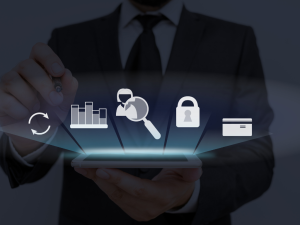When the world went remote, it felt like a quick fix. But now, as online learning becomes a permanent fixture in education, students are making one thing clear:
Endless Zoom calls just aren’t it.
The initial novelty of learning in pyjamas wore off quickly, and what followed was a very real mental and physical drain—now widely known as Zoom fatigue.
But out of that exhaustion, something better is taking shape: hybrid learning environments that blend the best of synchronous and asynchronous education. Flexible. Humans. Sustainable.
Let’s take a closer look at why the shift to hybrid classrooms isn’t just a trend—it’s a much-needed evolution.
The Science Behind Zoom Fatigue
You’re sitting through your fourth virtual lecture of the day. The screen blurs. Your back aches. Your brain? Frazzled.
It’s not just you—research shows that video calls increase cognitive load. Here’s why:
- Non-verbal cues are harder to read
- Eye contact feels unnatural
- Self-view increases anxiety and self-monitoring
- Minimal movement reduces circulation and alertness
Unlike in-person or even well-designed asynchronous formats, synchronous video calls can quickly become draining when used as the default mode of instruction.
Why Remote Learning Isn’t Going Away
Despite the challenges, the demand for remote learning options is only increasing. Why?
- Accessibility: Students in rural areas or with mobility limitations now have better access to education
- Flexibility: Learners can revisit recorded lectures, work around part-time jobs, and study on their own schedule
- Tech familiarity: Digital platforms are now second nature to most learners and educators
But that doesn’t mean we should be replicating traditional classrooms online, minute for minute.
That’s where hybrid learning steps in.
What Is a Hybrid Learning Environment?
Hybrid learning blends:
- Live (synchronous) sessions for real-time interaction, collaboration, and discussion
- On-demand (asynchronous) tools like recorded lectures, self-paced assignments, and interactive modules
The goal? To give students control over how they engage with content while still preserving moments of connection and feedback.
Why Hybrid Classrooms Work Better
Here’s what makes hybrid learning more effective than all-Zoom or all-lecture approaches:
- Reduced burnout: Students can learn on their own terms, decreasing cognitive overload
- Improved retention: On-demand content means students can review difficult topics anytime
- Higher engagement: Live sessions become purposeful—not just passive watching
- Increased equity: Learners with different time zones, tech setups, or responsibilities can still fully participate
Hybrid classrooms are not about replacing human teachers. They’re about using tech as a tool, not a tether.
What Hybrid Learning Looks Like in Practice
A modern hybrid course might include:
- Weekly live sessions for discussions, Q&A, and real-time problem-solving
- Pre-recorded lectures with timestamps and transcripts
- Self-paced labs or assignments integrated with an LMS
- Discussion boards or chat apps to continue the conversation asynchronously
- Virtual labs or simulations for hands-on experience
Instructors are now becoming facilitators—not just lecturers. And that’s a good thing.
The Role of Courseware and EdTech
The success of hybrid learning depends on how seamless, flexible, and interactive the course materials are.
That’s where smart, purpose-built platforms make a difference.
For example, Ascend Education’s courseware includes:
- Certification-aligned content
- Instructor-developed assessments
- Virtual labs that support real-world skills
- Compatibility with popular LMS platforms like Canvas and Blackboard
This ensures students don’t just watch—they do.
The Bottom Line: Choice and Balance
Students aren’t asking for less education—they’re asking for better formats.
They want options. They want structure without rigidity. They want to interact, but not burn out.
The shift to hybrid learning is a response to these needs. And as schools and colleges continue to adopt flexible teaching models, they’re seeing higher engagement, improved outcomes, and stronger retention.
Final Thoughts
Zoom fatigue was the wake-up call. Hybrid learning is the answer.
We’re not going back to the old way of doing things. And we shouldn’t.
The classroom of the future is one that respects time, energy, and attention—while still challenging and empowering students to learn deeply.
Looking to build a hybrid-ready curriculum?
Ascend Education’s courseware is designed with flexibility in mind. Whether you’re teaching in person, online, or somewhere in between, our platform gives you the tools to make learning work—anytime, anywhere.
Let’s make education better. Together.






